Best Practices Articles
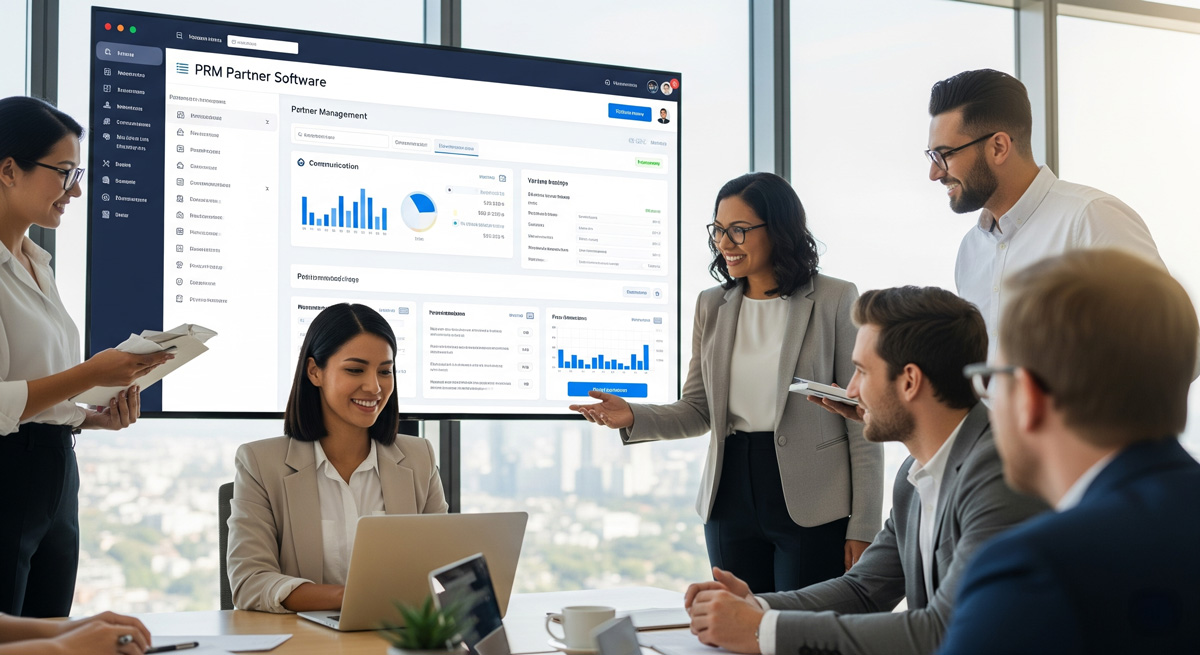
Your Definitive Guide: How to Choose the Best PRM Software for Your Business
Choosing the best PRM software is a significant investment for any business. It promises to unlock new levels of efficiency, engagement, and revenue from your indirect sales channels. However, with a crowded market and diverse features, navigating the selection process can feel daunting. The best PRM software isn't about picking the most expensive or feature-rich option; it's about finding the solution that perfectly aligns with your unique business needs, channel strategy, and long-term growth aspirations. This comprehensive guide outlines key steps, essential features, and critical considerations to ensure you select the right Partner Relationship Management solution to drive channel growth and maximize ROI. This guide provides a structured, step-by-step approach to help you confidently choose the ideal PRM software to empower your partners and accelerate your channel success.
Step 1: Define Your "Why" – Clarify Your Channel Strategy & Objectives for the Best PRM Software
Before you even look at a single vendor, you must understand why you need PRM and what you aim to achieve with it. This foundational step will inform every subsequent decision.
- Identify Your Current Pain Points: What specific challenges are you facing with your current channel management? Be specific. Are you struggling with manual processes that consume excessive time and resources, leading to inefficiencies and potential errors? Do you experience a lack of partner engagement, where your partners are not actively participating in your programs or utilizing your resources? Is there poor visibility into your pipeline, making it difficult to forecast sales or understand partner performance? Are your onboarding processes for new partners inefficient, leading to delays in productivity and partner dissatisfaction? Do you encounter incentive management errors, causing confusion or distrust among your partners regarding their payouts and rewards? Are you facing channel conflict, where direct sales compete with partner sales, leading to tension and lost opportunities? Articulating these pain points helps you identify the problems the best PRM software must solve.
- Outline Your Channel Vision: What does a successful partner program look like for your company in 1, 3, and 5 years? This long-term perspective is crucial for choosing scalable and future-proof best PRM software. Do you want to aggressively recruit new partners, significantly expanding your reach and market penetration? Do you aim to deepen relationships with existing ones, fostering loyalty and driving more business from your current partners? Are you planning to launch new product lines through partners, leveraging their market access and expertise? Or do you intend to expand into new geographies, using partners to enter untapped markets? Your vision dictates the features and capabilities your ideal PRM solution must possess.
- Determine Your Partner Types: Are you working primarily with resellers, distributors, referral partners, system integrators, technology partners, or a mix? Each type may have different needs from a PRM. Resellers, for example, might require robust deal registration and co-marketing tools. Distributors might need advanced inventory management and logistics integration. Referral partners might prioritize easy lead submission and tracking. System integrators could benefit from extensive technical documentation and support forums. Technology partners might need strong API integrations and joint development support. Understanding these nuances helps you evaluate if the best PRM software can cater to your specific partner ecosystem.
- Assess Your Channel Maturity: Are you a startup building your first channel program, a mature enterprise looking to optimize, or somewhere in between? Your starting point influences the complexity of the solution you need. A startup might require simpler, out-of-the-box functionality to get started quickly. A mature enterprise might need highly customizable and extensible best PRM software that integrates deeply with existing complex systems. Companies in between might look for solutions that balance ease of use and growing capabilities. This assessment prevents you from overbuying or underbuying a PRM solution.
- Establish Key Performance Indicators (KPIs): How will you measure the success of your PRM investment? Establishing clear KPIs before selection ensures you can track the actual impact of the best PRM software. Will you measure partner-sourced revenue, looking for a direct increase in sales attributable to partners? Will you track the number of active partners, aiming to increase engagement and participation? Is partner satisfaction a key metric that indicates how happy your partners are with your program and support? Do you want to see an increase in deal registration volume, signifying more opportunities being brought in by partners? Will you monitor training completion rates, ensuring partners are well-equipped to sell your products? Or will you focus on reducing administrative time and showing efficiency gains from automation? These KPIs will guide your selection process and provide a clear benchmark for success.
Action: Document your business objectives, pain points, and desired outcomes. This will become your internal "Requirements Document." This document serves as a crucial reference point throughout the entire selection process. It ensures all stakeholders remain aligned and that the best PRM software addresses your needs directly.
Step 2: Assemble Your Dream Team – Involve Key Stakeholders for the Best PRM Software
PRM software impacts multiple departments. Successful implementation and adoption depend on early and continuous involvement from relevant stakeholders. Without their buy-in and active participation, even the most feature-rich PRM software can fail to deliver its full potential.
- Channel Leadership/Managers: These individuals will be the primary users of the PRM system. They are crucial for defining functional requirements, as they understand the day-to-day operations and challenges of managing the channel. Their involvement also ensures partner adoption, as they directly interact with partners and promote the system's benefits. They must feel confident that the best PRM software empowers them and their partners.
- Sales Team Leadership: Their input is vital for seamless integration with direct sales, effective lead management, and avoiding channel conflict. Sales leaders can provide insights into how leads are handled, what information is critical for sales success, and how to create a harmonious relationship between direct and indirect sales teams. Their perspective ensures the best PRM software supports, rather than hinders, overall sales objectives.
- Marketing Team: Marketing is essential for defining content needs, co-marketing capabilities, and through-channel marketing automation (TCMA). They understand how to enable partners with brand-compliant materials, launch joint campaigns, and leverage the PRM for broader marketing initiatives. Their expertise ensures the best PRM software provides the tools for effective partner marketing.
- IT Department/RevOps: This team is critical for integration requirements, data security, compliance, and overall technical feasibility. They will assess the PRM's compatibility with your existing tech stack, evaluate security protocols, and ensure data privacy compliance. Their technical expertise is indispensable for a smooth implementation and ongoing system stability. They provide the best PRM software that fits within your current infrastructure without causing significant disruptions.
- Finance/Accounting: Input from Finance and Accounting is necessary for incentive and rebate management, payout processes, and budget considerations. They ensure the PRM's financial capabilities align with your compensation structures, track payments accurately, and provide necessary reporting for financial reconciliation. Their involvement guarantees that the best PRM software supports transparent and efficient financial operations with partners.
- A "Voice of the Partner": Consider involving one or two trusted partners in the evaluation process. Their perspective on usability and desired features is invaluable. They are the end-users of the partner portal and other partner-facing features. Their feedback can highlight potential pain points or opportunities internal teams might overlook. This direct input helps ensure the best PRM software enhances the partner experience.
Action: Identify and involve key stakeholders from the outset. Their collective input will create a comprehensive list of needs and ensure smoother adoption. Early involvement also fosters a sense of ownership among team members, crucial for change management and long-term success.
Step 3: Feature Deep Dive – Prioritize What Matters Most for the Best PRM Software
While a comprehensive PRM solution offers many features, not all will be equally important to your channel strategy. Prioritize features based on your "Why" from Step 1. This structured approach prevents feature bloat and ensures you focus on capabilities that deliver the most value.
Non-Negotiables (Must-Haves): These features are essential to solving your core problems and achieving your primary objectives. If a vendor doesn't have them, they're out.
- User-Friendly Partner Portal: The partner portal must be intuitive, branded, and easy for partners to navigate. This is the central hub for your partners, so its usability directly impacts partner engagement and satisfaction. A complex or clunky portal will deter partners from using it, negating the benefits of the PRM.
- Robust Deal Registration: This feature requires clear workflows, efficient conflict resolution mechanisms, and seamless CRM integration. Effective deal registration protects partner investments, prevents channel conflict, and provides valuable visibility into the sales pipeline. The best PRM software handles this process flawlessly.
- Content & Asset Management: You need a centralized system for content and asset management that is easily accessible and offers robust version control. Partners need quick access to sales collateral, marketing materials, training documents, and product information. Reasonable version control ensures partners always use the latest and most accurate materials.
- Performance Tracking & Reporting: The best PRM software provides granular insights into partner activities and ROI. This includes tracking leads, deals, revenue generated, training completion, and other key metrics. Robust reporting capabilities allow you to monitor performance, identify trends, and make data-driven decisions to optimize your channel program.
- Core CRM Integration: Seamless, two-way data syncing with your existing CRM is critical. This ensures data consistency between your sales teams and partners, prevents manual data entry errors, and provides a unified view of customer interactions and pipelines. Without strong CRM integration, the value of the PRM is significantly diminished.
High Priority (Should-Haves): These features offer significant value and efficiency gains but might not be immediate deal-breakers. They often represent opportunities for significant operational improvement.
- Automated Partner Onboarding & Training (LMS): This feature offers streamlined processes and customizable learning paths. Automated onboarding reduces the administrative burden and accelerates time-to-productivity for new partners. An integrated Learning Management System (LMS) ensures partners receive consistent, practical training, keeping them up-to-date on your products and sales methodologies.
- Through-Channel Marketing Automation (TCMA): TCMA enables co-brandable campaigns and syndicated content. This empowers partners to efficiently execute marketing campaigns on your behalf, extending your marketing reach and generating more leads. It ensures brand consistency while allowing partners to localize content.
- Incentive & Rebate Management: This capability involves flexible rules and transparent tracking for incentives and rebates. It allows you to design complex incentive structures, track partner performance against targets, and accurately calculate and disburse payouts. Transparency builds trust and motivates partners.
- Communication & Collaboration Tools: Secure messaging and announcement features are essential for fostering strong partner relationships. These tools facilitate direct communication, disseminate important updates, and create community among your partners.
- Scalability & Customization: The best PRM software must have the ability to grow and adapt to your evolving needs. As your channel program expands or your strategy shifts, the PRM must accommodate increased users, new partner types, or additional functionalities without requiring a complete overhaul. Customization options ensure the system aligns with your unique workflows.
Nice-to-Haves (Could-Haves): These features offer additional benefits but are not critical for initial success. They can enhance the partner experience or provide advanced insights but are typically considered after meeting core needs. Examples include gamification, community features, advanced analytics (e.g., AI-driven insights), mobile apps, and advanced integration with other systems (e.g., ERP). Gamification can boost partner engagement, while community features foster peer-to-peer collaboration. AI-driven insights might offer predictive analytics for partner performance. Mobile apps can provide on-the-go access to the portal.
Action: Create a detailed feature checklist, categorizing each feature as "Must-Have," "Should-Have," or "Nice-to-Have." This checklist will serve as a systematic way to evaluate vendors and ensure you prioritize features that truly matter to your business.
Step 4: Research & Shortlist – Explore the Best PRM Software Landscape
With your requirements clearly defined, you can now begin researching potential vendors. The PRM market is dynamic, with many providers offering varying strengths and specializations.
- Industry Analyst Reports: Consult reports from Gartner, Forrester, G2, and other reputable sources for their market overviews, vendor rankings, and insights. These reports often provide in-depth analyses of vendor capabilities, market trends, and competitive landscapes. They can give you a high-level understanding of the major players and their positions in the market.
- Online Review Platforms: Sites like G2, Capterra, and PeerSpot offer invaluable, real-world user reviews. Pay attention to reviews from companies similar to yours in size and industry. These platforms provide unfiltered user feedback, highlighting strengths, weaknesses, and user experiences. Look for review patterns regarding ease of use, customer support, and specific feature performance.
- Vendor Websites: Explore their solutions, case studies, and feature lists. While vendor websites naturally present their offerings in the best light, they are essential for understanding their stated capabilities, target industries, and customer success stories. Look for information that directly addresses your "Must-Have" features.
- Peers & Networking: Ask colleagues in your industry about their experiences with different PRM platforms. Word-of-mouth recommendations and insights from trusted peers can be highly valuable. They might share practical tips and lessons learned or introduce you to vendors you hadn't considered.
Based on your research and feature checklist, narrow your options to a shortlist of 3-5 vendors that appear to be the best fit. This shortlist should consist of vendors that genuinely meet your core requirements and seem capable of supporting your channel strategy.
Action: Create a shortlist of promising PRM vendors (e.g., ZINFI, Impartner, Salesforce PRM, PartnerStack, Allbound). This focused list makes the subsequent evaluation steps more manageable and efficient.
Step 5: Engage with Vendors – Demos, Trials & RFPs for the Best PRM Software
This is where you get hands-on and interact directly with the shortlisted vendors. This stage is crucial for validating vendor claims and assessing how well their solution meets your needs.
- Request Detailed Demos: Schedule personalized demos. Crucially, provide the vendor with your specific use cases and objectives before the demo so they can tailor their presentation to your needs. This ensures the demo is relevant and addresses your pain points rather than a generic overview. Involve your key stakeholders in these demos. Their presence ensures that diverse perspectives are considered and all critical questions are asked.
- Ask Probing Questions: Don't just watch; ask about specific workflows, integration capabilities, reporting dashboards, and how they handle your identified pain points. Dig deep into how the features you prioritized in Step 3 function in practice. Ask for real-world examples and scenarios.
- Inquire About Implementation & Support: Understand their onboarding process, average implementation timelines, training options, and ongoing customer support structure (e.g., dedicated account managers, 24/7 support, self-service resources). A good implementation plan is as important as the software itself. Ask about their typical time-to-value. Understanding how long it takes to see tangible results is critical for ROI calculations.
- Understand Pricing Models: Get a clear breakdown of costs, including licensing (per user, per partner, tiered), implementation fees, support costs, and any potential hidden charges or add-on modules. PRM pricing can be complex, so understand the full financial commitment. Ask for a Total Cost of Ownership (TCO) estimate. This considers all direct and indirect costs over the lifespan of the software.
- Request an RFP (Request for Proposal) or RFI (Request for Information): For more complex evaluations, an RFP can standardize the information you receive from each vendor, making direct comparison easier. An RFP allows you to specify your requirements and compare how each vendor responds to the same questions.
- Consider a Pilot Program or Trial: A pilot program with a subset of your partners can provide invaluable real-world experience before a full commitment. A trial allows you to test the best PRM software in your environment, identify potential challenges, and get direct feedback from a small group of partners.
Action: Conduct thorough demos, ask targeted questions, understand pricing, and consider an RFP or trial for your top contenders. This comprehensive engagement ensures you gather all the necessary information for an informed decision.

Step 6: Evaluate & Compare – Make Your Informed Decision on the Best PRM Software
Gather all your collected information and systematically compare each vendor against your defined criteria. This objective evaluation helps you identify the best PRM software that meets your needs.
- Feature Alignment: How well does each vendor's solution map to your "Must-Have," "Should-Have," and "Nice-to-Have" features? Create a matrix to compare feature availability and functionality across all shortlisted vendors. Assign scores based on how completely each vendor meets your requirements.
- User Experience (UX): How intuitive and user-friendly is the platform for your internal teams and partners? A clunky system will hinder adoption. Consider factors like ease of navigation, clarity of interface, and overall aesthetic appeal. User adoption is critical for the success of any software implementation.
- Integration Prowess: Is the integration with your CRM and other critical systems robust and reliable? How much custom development will be needed? Evaluate the depth and breadth of their integration capabilities. Seamless data flow between systems is essential for operational efficiency and accurate reporting.
- Scalability & Future-Proofing: Can the solution accommodate your projected channel growth and evolving strategies? Does the vendor have a clear product roadmap? The best PRM software should meet your current needs and support your long-term vision. A vendor with a clear roadmap demonstrates a commitment to ongoing development and innovation.
- Vendor Reputation & Support: What do reviews and references say about their reliability, responsiveness, and commitment to customer success? Strong customer support is vital for smooth implementation and ongoing operations. Look for vendors with a track record of excellent service and positive customer testimonials.
- Total Cost of Ownership (TCO): Does the long-term cost align with your budget and anticipated ROI? Factor in all costs: licensing, implementation, training, support, and potential customization or integration expenses. A lower initial price might hide higher long-term costs.
- Methodology & Partnership: Does the vendor offer a clear framework for success, such as ZINFI's PartnerOps Framework, that goes beyond just the software? This indicates a deeper partnership approach. Some vendors offer strategic guidance and best practices to help you optimize your channel program, not just provide a tool.
ZINFI's PartnerOps Framework Reminder: As you evaluate, consider how each vendor's solution supports the full lifecycle of your channel program. ZINFI's PartnerOps framework (Strategize, Recruit, Onboard, Enable, Co-Market, Co-Sell, Incentivize, Accelerate) provides a holistic lens to assess if the chosen PRM can optimize every stage of your partner engagement. Look for a vendor that provides the tools and strategic guidance to implement a successful PartnerOps model. This holistic approach ensures the best PRM software becomes a foundational element for your channel's strategic success.
Action: Create a weighted scoring matrix to compare vendors across all criteria objectively. Assign weights to each criterion based on its importance to your business. Discuss findings with your stakeholder team. This collaborative discussion helps solidify a consensus decision and ensures all perspectives are considered.
Step 7: Plan for Success – Implementation & Beyond for the Best PRM Software
Once you've made your decision, the work isn't over. A successful PRM implementation requires careful planning and ongoing management. Choosing the best PRM software is the first step; effective deployment and continuous optimization are crucial for realizing its full value.
- Develop an Implementation Plan: Work closely with your chosen vendor to create a detailed project plan. This plan should include timelines for each phase, clear responsibilities for both your team and the vendor's team, a comprehensive data migration strategy, and detailed training schedules. A well-defined plan minimizes disruptions and ensures a smooth transition to the new system.
- Communicate with Partners: Inform your partners about the new system and its benefits, and provide clear guidance on how to use it. Highlight how it will make "doing business with you" easier. Proactive and transparent communication builds excitement and encourages adoption. Explain how the best PRM software will improve their experience, simplify their tasks, and ultimately help them grow their business.
- Invest in Training: Provide comprehensive training for your internal channel team and partners. Do not underestimate the importance of change management. Training should be ongoing and tailored to different user roles. Address potential resistance to change by highlighting the benefits and providing adequate support. User proficiency is paramount for maximizing the investment in the best PRM software.
- Monitor & Optimize: Continuously track your KPIs. Gather feedback from partners and internal users, and make adjustments to optimize your PRM usage and channel strategy. The PRM implementation is not a one-time event; it requires continuous monitoring and refinement. Use the data collected through the PRM to identify areas for improvement and adapt your programs.
- Leverage Vendor Resources: Maximize your investment by using your vendor's customer success teams, training materials, and best practices. Your vendor is a partner in your success. Utilize their expertise and resources to overcome challenges, learn new functionalities, and stay informed about updates.
Action: Prepare for a phased implementation, prioritize user adoption, and commit to continuous optimization. A well-executed implementation and a commitment to ongoing improvement ensure your chosen best PRM software delivers sustained value and drives channel success for years.
Choosing the best PRM software is a strategic investment in your channel's future. By following these steps, you can confidently select a solution that not only streamlines your operations but also empowers your partners, drives significant revenue growth, and builds a resilient, high-performing channel ecosystem for years to come.
Best Practices Guidebook
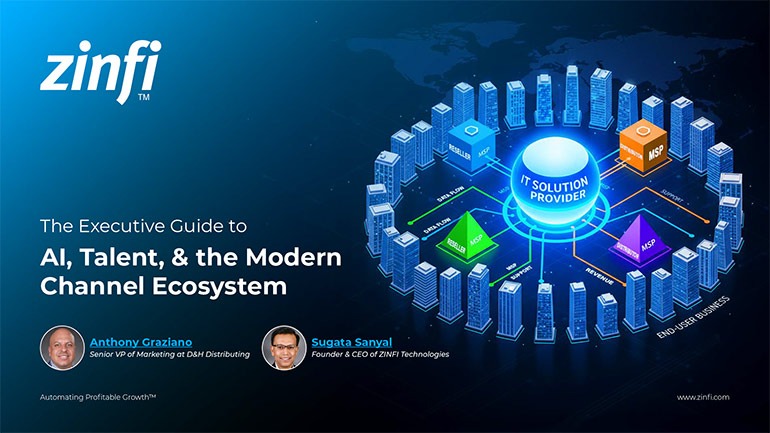 Modernizing Channel Marketing: AI and Ecosystem Enablement Best Practices
Modernizing Channel Marketing: AI and Ecosystem Enablement Best PracticesDownload for FREE
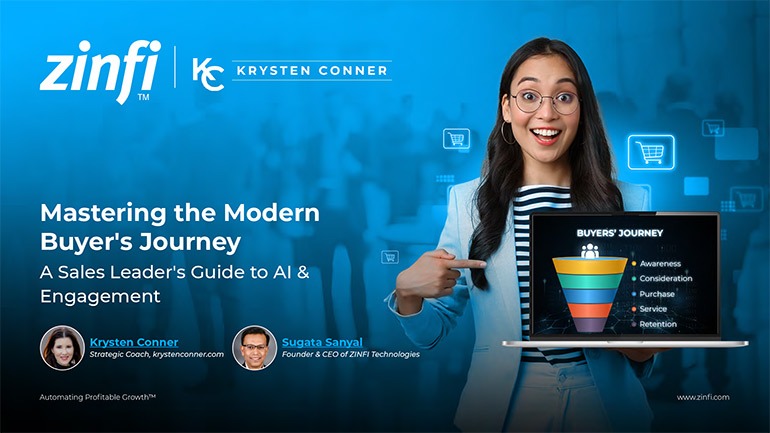 The Channel’s Shift to Partner-Led With AI Best Practices
The Channel’s Shift to Partner-Led With AI Best PracticesDownload for FREE
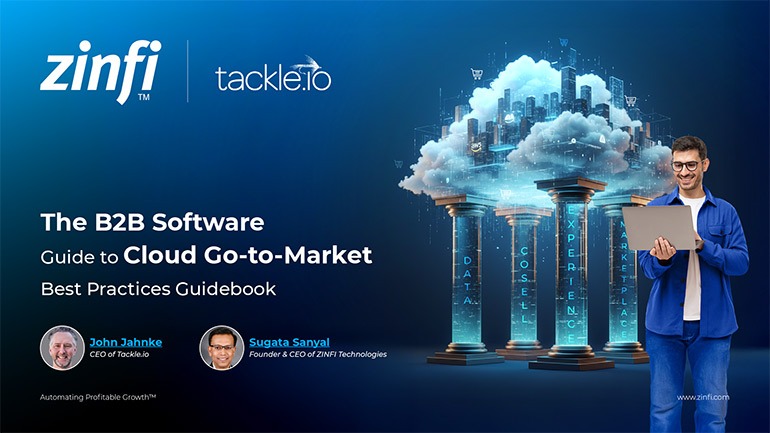 Hyperscalers, ISVs, and AI: Shaping the Future of B2B Software Distribution
Hyperscalers, ISVs, and AI: Shaping the Future of B2B Software DistributionDownload for FREE
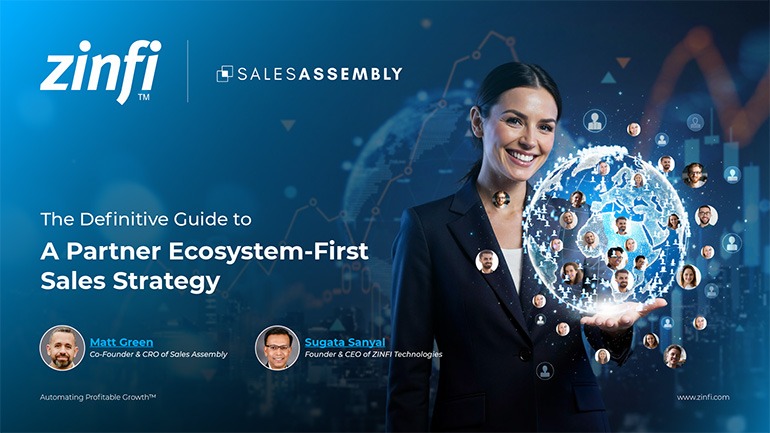 Definitive Guide to a Partner Ecosystem-First Sales Strategy
Definitive Guide to a Partner Ecosystem-First Sales StrategyDownload for FREE
 The Partner-Led Digital and AI Transformation Best Practices
The Partner-Led Digital and AI Transformation Best PracticesDownload for FREE
 Startup Talent Recruitment: Hiring Missionaries, Not Mercenaries
Startup Talent Recruitment: Hiring Missionaries, Not MercenariesDownload for FREE
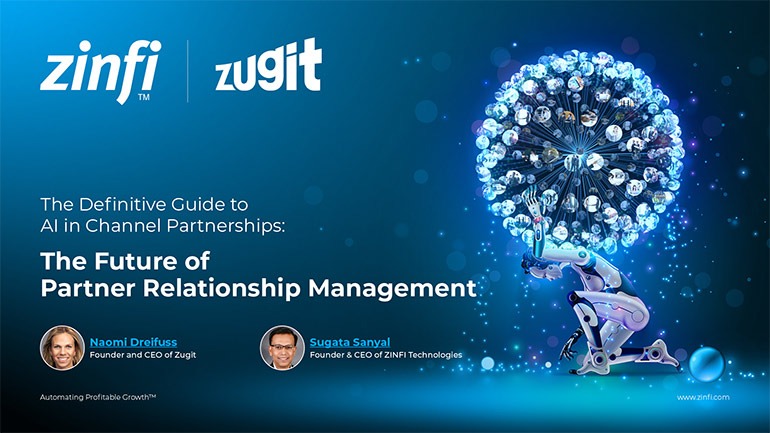 The Future of Partner Relationship Management with AI in Partnerships
The Future of Partner Relationship Management with AI in PartnershipsDownload for FREE
 Cybersecurity for the 99%: Strategies from the Frontline
Cybersecurity for the 99%: Strategies from the FrontlineDownload for FREE
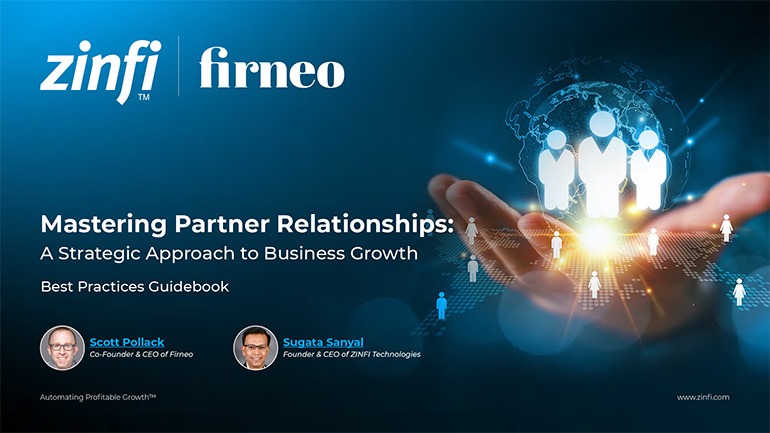 Mastering Partner Relationships: A Strategic Approach to Business Growth
Mastering Partner Relationships: A Strategic Approach to Business GrowthDownload for FREE
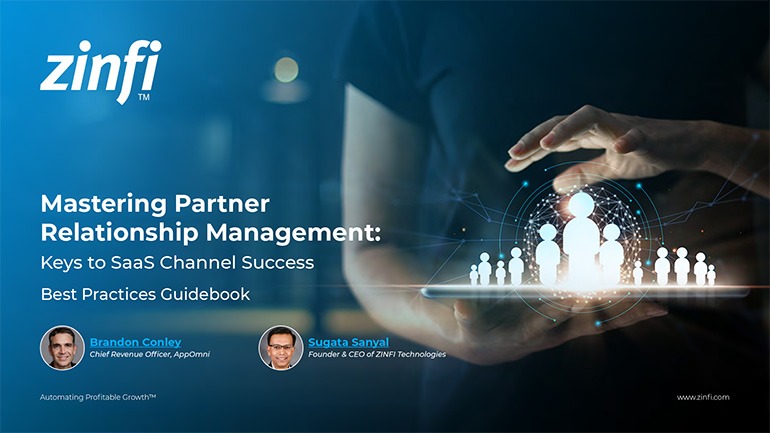 Mastering Partner Relationship Management: Keys to SaaS Channel Success
Mastering Partner Relationship Management: Keys to SaaS Channel SuccessDownload for FREE
 Navigating the AI Revolution: Guide for Partners in the Microsoft Ecosystem
Navigating the AI Revolution: Guide for Partners in the Microsoft EcosystemDownload for FREE
 Mastering the Modern Buyers Journey: Sales Leader’s Guide to AI & Engagement
Mastering the Modern Buyers Journey: Sales Leader’s Guide to AI & EngagementDownload for FREE










